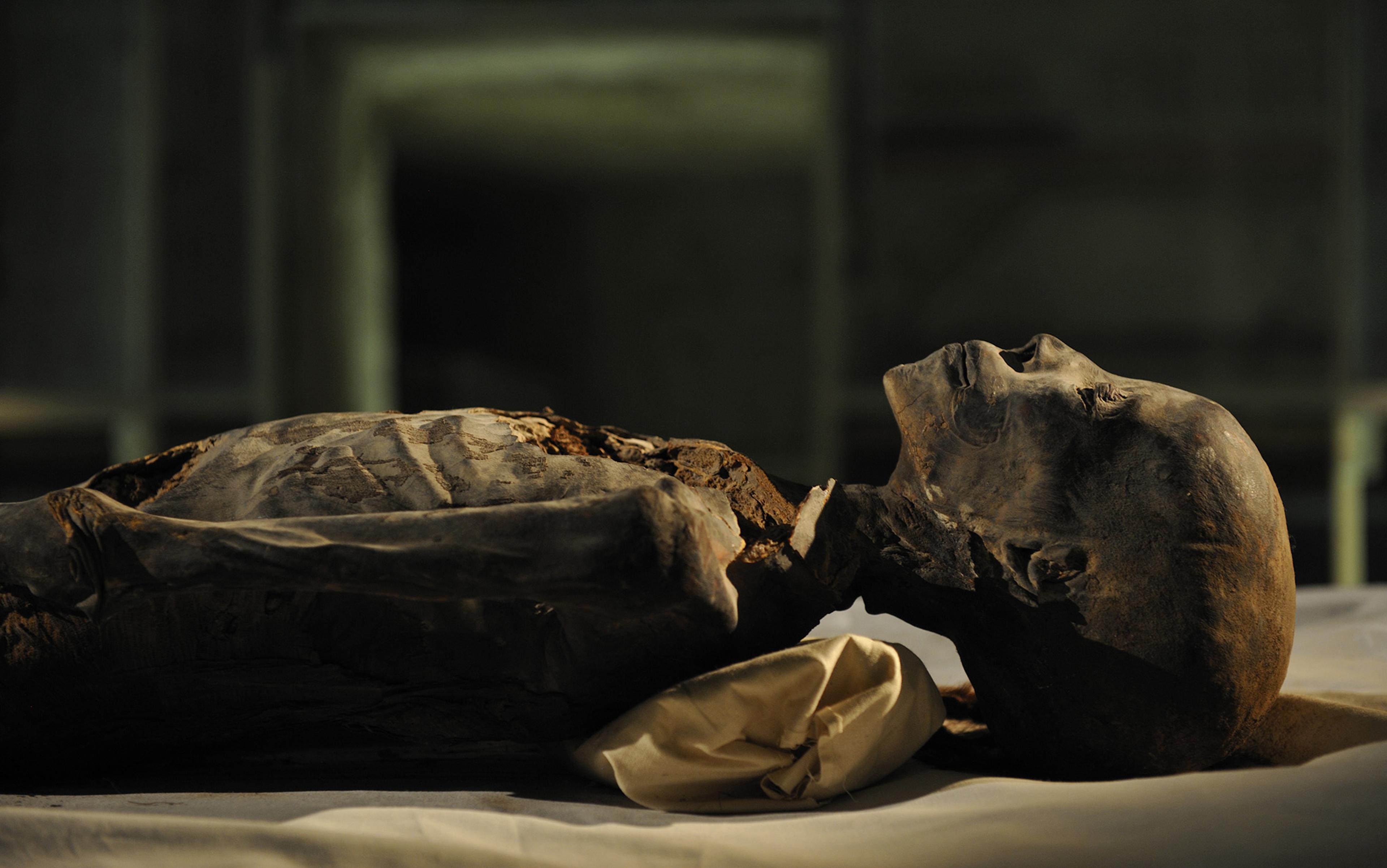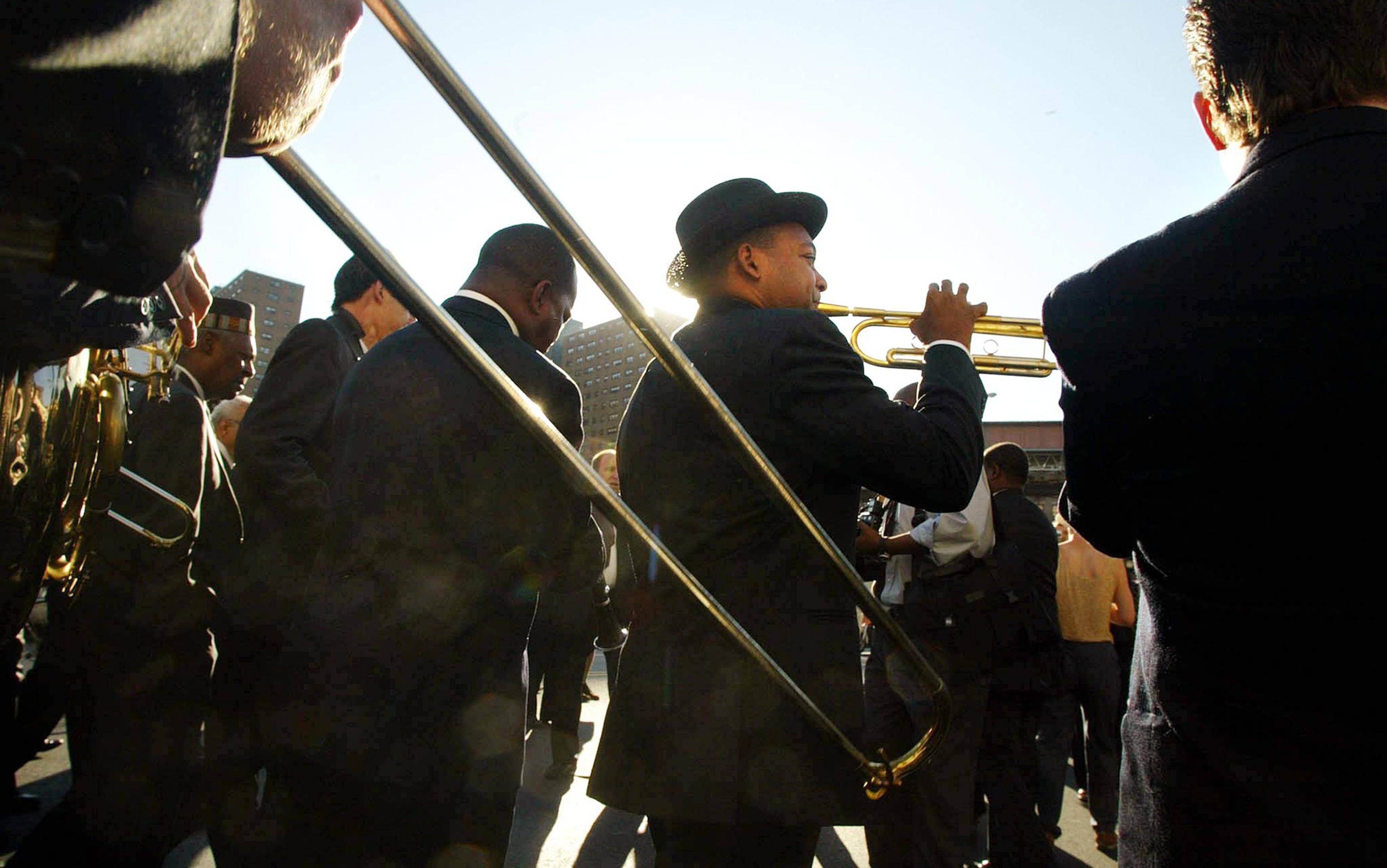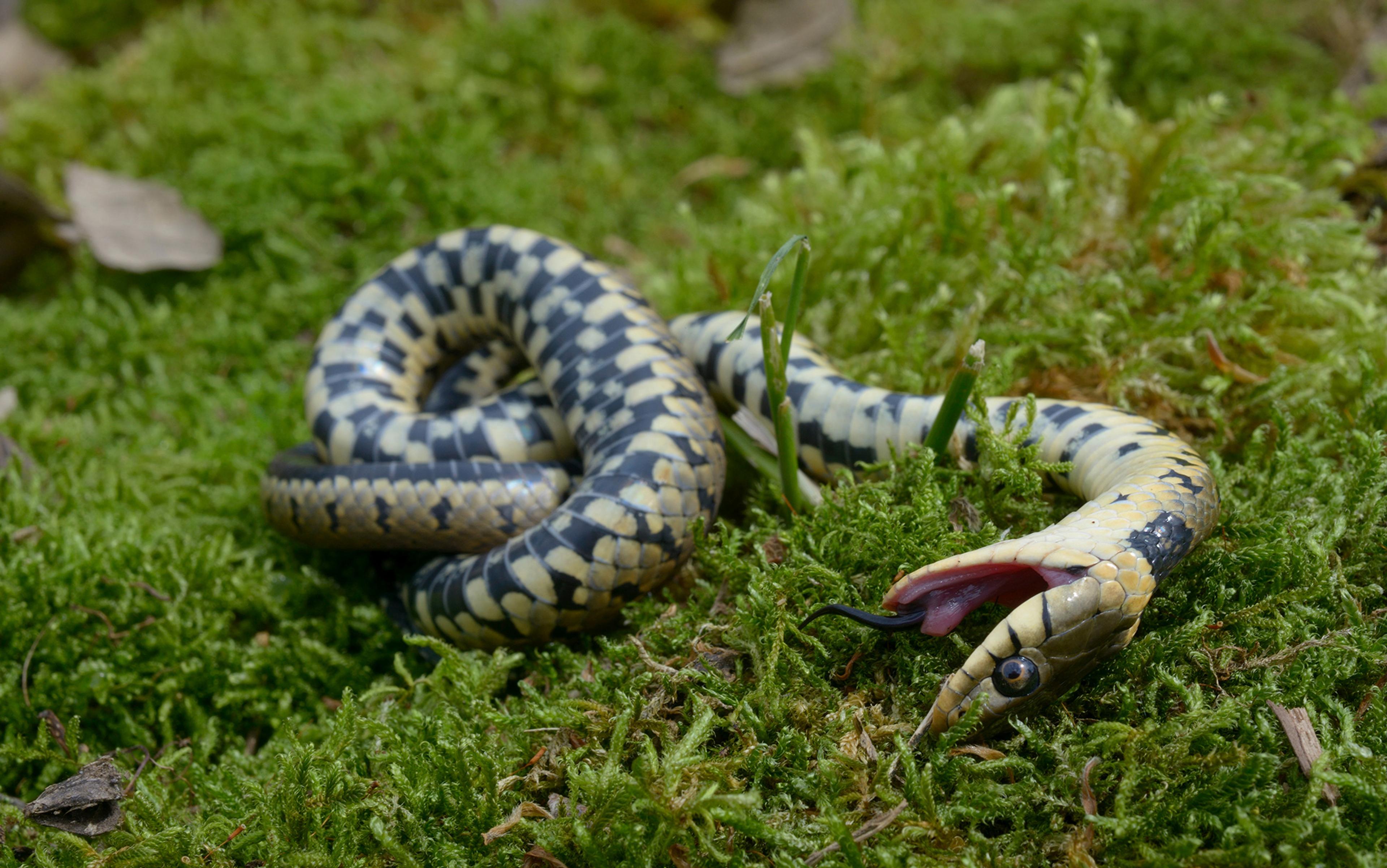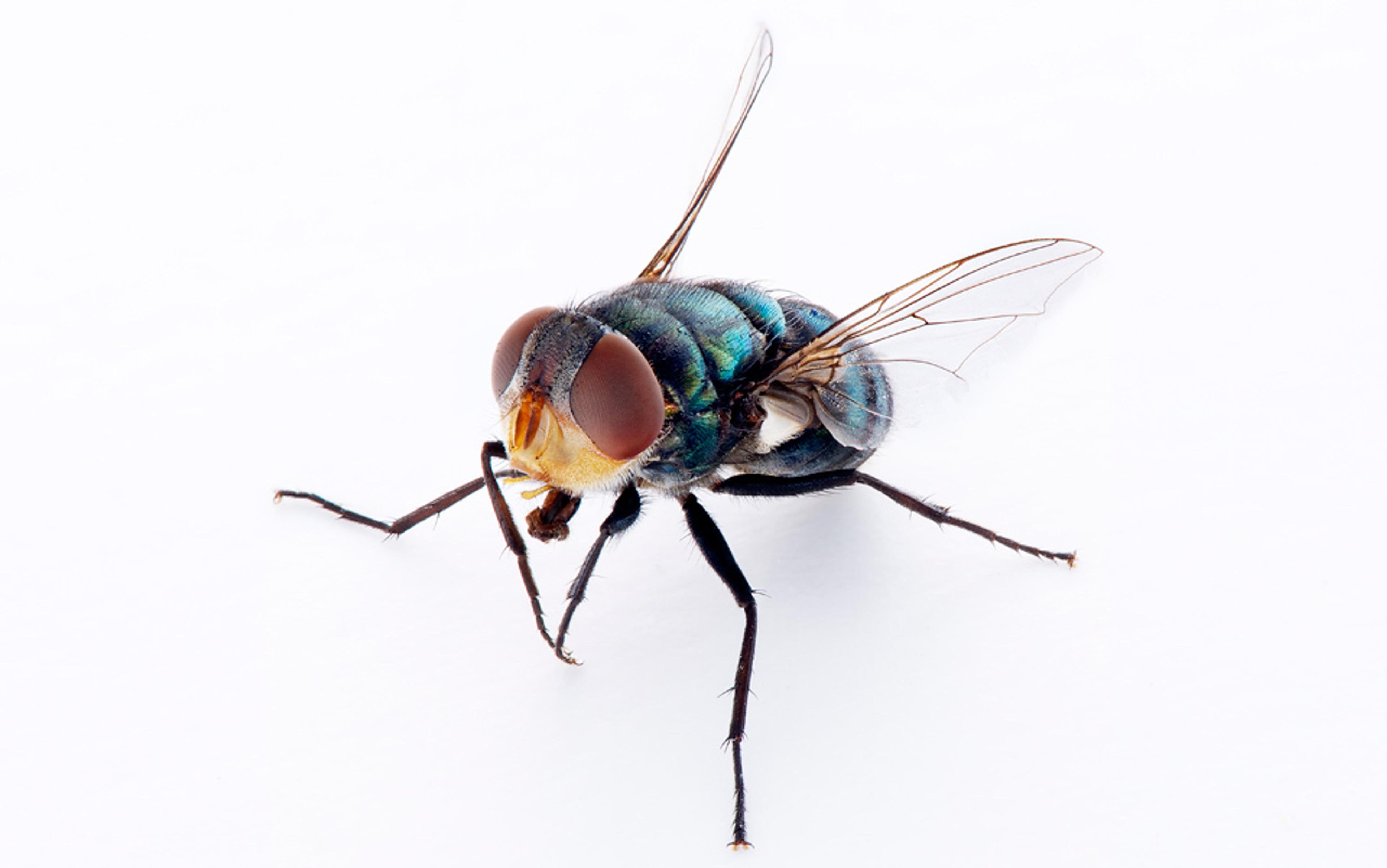In 1612, the English philosopher Francis Bacon opined that adults fear death just like children who fear to go into the dark. ‘And as that natural fear in children is increased with tales,’ he wrote, ‘so is the other.’
Today, our fears about death are still watered by depictions of painful, sorrowful entrances into the unknown, just as they were in Bacon’s time. ‘Groans, and convulsions, and a discoloured face, and friends weeping, and blacks, and obsequies, and the like, shew death terrible,’ he wrote. However, for Bacon, our fears are not helpful: ‘It is as natural to die as to be born.’
But what happens when death does not come, even after the groans and convulsions and obsequies? What happens when the end is not really the end? How should we understand fears not simply of dying, but of the dead themselves?
In the centuries before Bacon was writing, these fears had spread across Europe, propelled by tales of buried bodies that had returned to walk among the living. Following the bubonic plague, which may have killed an estimated 25 million people in the 14th century, stories of people rising from the grave seemed to gain new traction. And by the 16th and 17th centuries, tales of hungry vampires and vengeful revenants travelled across the continent, amplifying fears of the reanimated dead.
More recently, these stories have become little more than fantastic scaffolding for our modern entertainment. Think of the undying monsters from 19th-century gothic melodramas, such as Mary Shelley’s Frankenstein (1818) or John Polidori’s The Vampyre (1819). Consider the fiendish figures who stalk the pages of serialised penny dreadfuls, such as Varney the Vampire; or, The Feast of Blood (1845-47), a nearly 667,000-word slasher-horror novel that followed the adventures of the blood-sucking Sir Francis Varney. We might also think of the 20th-century boom in Hollywood films and television series depicting the undead of all kinds, beginning with Nosferatu: A Symphony of Horror (1922).
This, at least, is how I once understood the origins of our modern ideas about the undead. I believed they were created and enlarged by the medieval and early modern European imaginations. But after reading about Neolithic burials in which bodies had been pinned down with stones, seemingly to stop them from rising, I began to doubt my explanation. How deep do these fears go, I wondered?
In the 21st century, researchers are continuing to find traces of such fears buried across the archaeological record. Though it’s highly unlikely that people from 10,000 years ago conceived of ‘vampires’ and other undead creatures in the same way we do, the ‘Archaeology of Fear’, as the funerary archaeologist Anastasia Tsaliki calls it, seems to link us with the past in unexpected ways.
Such fears are scribed deep into European history and soil. They are written into my ancestors’ bones. And they lead us to an understanding of death that greatly exceeds the one described by Bacon in 1612. Not only is it ‘as natural to die as to be born’. For much of our species’ history, it may also have been just as ‘natural’ to fear the dead.
According to growing archaeological evidence, this fear appears to stretch far beyond written history into deep time. And that leads to a much more complex and uncertain question: where did such fears come from?
To understand why early humans seemed to fear the dead, we first need to consider the long history of intentional burial. Only through excavated graves, makeshift tombs and other forms of interment can we begin making sense of prehistoric anxieties surrounding the dead. However, this history is not always straightforward: though we now have a rough idea of when burial became widespread, researchers are still vigorously debating exactly when humans began deliberately interring their dead.
One of the most controversial claims is that intentional burials may have been practised as early as 240,000 years ago by one of our hominin relatives, Homo naledi. This was proposed in 2023 after a team of researchers, led by the paleoanthropologist Lee Berger, found a minimum of 15 Homo naledi skeletons in the caverns of South Africa’s Rising Star cave system. The team claims that the excavated remains show ‘a consistent pattern of differentiation’ – that is, the bodies were intentionally buried. However, this interpretation has since been challenged by other archaeologists who argue that there is no sedimentological evidence showing that the burials were deliberate. Some experts have split the difference by remaining open to the idea that the bodies were deliberately dragged into the cave after death and subsequently ‘buried’ through natural deposition. Research at Rising Star is ongoing.
Some of the dead appear to have been buried surrounded by flowers
The first widely accepted intentional burial dates to around 100,000 years ago at the mouth of Qafzeh Cave in Israel, a site that was excavated in the 1930s. Here, the bodies of 15 Homo sapiens were carefully placed in the earth alongside 71 pieces of ochre and stone tools, which clearly indicate that these hominins were given a deliberate burial.
Evidence for more recent burials has been found in Kenya, Iraq and France. In 2021, at Kenya’s Panga ya Saidi cave, researchers found the remains of a three-year-old child who was carefully buried in the foetal position around 78,000 years ago. At Shanidar cave in Iraq, 10 Neanderthal skeletons uncovered in 1960 appear to have been intentionally buried around 65,000 to 35,000 years ago. Some of the dead appear to have been buried surrounded by flowers. And in France, Neanderthal skeletons found at La Chapelle-aux-Saints and La Ferrassie have been viewed by some experts as further evidence that deliberate burials may have taken place around 41,000 years ago.
Though debate continues about whether early humans intentionally buried their dead and when exactly this practice began, it seems that deliberate burials became well established around 40,000 years ago, during the Upper Palaeolithic period.
For anthropologists, the practice of burial reveals as much about the living as it does about the dead. Such mortuary rituals are a key factor in tracing the emergence of human uniqueness in the archaeological record because the act of making a ‘tomb’ indicates the ability to think symbolically. Symbolic thought would have granted our ancestors the ability to transcend the immediate time and place of the present moment, to reach beyond the practical and mundane. It would have enabled new beliefs, perhaps even the idea that the dead might rise from the grave.
In 1985, heavy machinery quarrying for the Dyje river irrigation project stumbled across an archaeological site in the village of Dolní Věstonice, which is now part of Moravia, a region in Czechia. Months after salvage operations commenced, a grave from the Upper Palaeolithic was discovered on 13 August 1986. Inside, archaeologists found the remains of three young men buried around 28,000 years ago.
The three skeletons were covered in charcoal from burnt spruce wood that had been laid upon them. Unusually, the bodies had been buried in an extended position, with their legs stretched out. The middle boy, named DV 15, was partially buried beneath the other two and showed severe pathological changes indicative of disease. To the right, DV 14 had been buried on his belly. To the left, DV 13 had been laid on his back with his outstretched hands reaching towards the pubic region of DV 15, which had been covered in red ochre. All three skulls had been coated in the same pigment. This is a highly unusual burial, described as ‘spectacular’ by one team of archaeologists.
Careful analysis of DV 15’s skeleton revealed numerous pathological issues including asymmetrical shortening of the femur, curvature of the right humerus and scoliosis of the spine. It appears that he was suffering from Chondrodysplasia calcificans punctata, a syndrome that causes abnormal skeletal and cartilage development, which could have produced his asymmetric bone pattern. This asymmetry was likely enhanced by trauma suffered in early life that led to further bone bowing and regrowth. But, unlike DV 15, the young men known as DV 13 and DV 14 were perfectly healthy when they died. They appear to have been killed and buried alongside DV 15. ‘This is not normal burial,’ according to the British archaeologist Paul Pettitt.
Was the use of wood and the two boys on either side to prevent the ‘diseased’ individual from returning?
Experts have struggled to agree on why these people were buried in this way. The use of red ochre may provide clues. In Culture and Communication (1976), the British anthropologist Edmund Leach wrote about the relationship of the colour to blood: ‘it is very common to find that red is treated as a sign of danger, which may be derived from red = blood. But red is also quite often associated with joy, which might come from red = blood = life.’ Pettitt has echoed this idea, arguing that the application of ochre to bodies during the Palaeolithic could have been used to represent deep red menstrual or arterial blood. So why were the three teenage boys symbolically associated with blood, and potentially danger?
The finding at Dolní Věstonice is one of the earliest examples of what archaeologists refer to as an ‘atypical’ or ‘deviant’ burial, an example of the dead being differentiated (or even dehumanised) in some way. This practice suggests that DV 15 was buried in an unusual way – in a strange position, painted with ochre and pinned down with wood – because there was something wrong with him.
For Pettitt, writing in The Palaeolithic Origins of Human Burial (2011), this is an example of ‘ritual containment’. Was the use of wood, as well as the position of the two boys on either side – one looking up, the other looking down – intended to prevent the ‘diseased’ individual in the middle from returning?
There’s a lot we still don’t know about the burial practices of humans during the Palaeolithic. However, as we will see, subsequent findings seem to indicate that burials like the one found at Dolní Věstonice may not relate only to a fear of difference and disease.
If we move to the island of Cyprus, we find further archaeological evidence from around 9,000 years ago. At the Neolithic site of Khirokitia in the Maroni valley, first excavated in the 1930s by Porphyrios Dikaios and later by Alain Le Brun, roughly 243 individuals have been uncovered. These date from the Chalcolithic period, a ‘Copper Age’ that lasted from around the 5th to the 3rd millennium BCE.
Standard burial practices at the time involved a single body being laid ‘flexed’ (bent into a foetal-like position) in a shallow pit beneath (or near) the floor of a domestic house. Sometimes, bodies were buried near hearths, which may have been regarded as gateways to the underworld, according to some archaeologists. Often, a large millstone is found near the skull of a buried body, and occasionally a person would be interred with ‘grave goods’, which may include personal objects or tools. In some cases, the heads of the deceased have been wedged against a stone or even severed from the body. Of these burials, a small number have been interred in particularly strange ways: some bodies have been buried together, some have been pinned down with stones, and others appear to have been tightly bound with rope.
Burial 207 is a child who died between the ages of five and seven. A stone was placed on their body
Under the floor of a former domestic structure in one part of the site, an adult that Dikaios labelled ‘Burial III’ was found on their right side with their spine straight and legs bent. A heavy quern stone, used for hand-grinding grain into flour, had been placed upon the sternum, and deliberately broken bowls lay around the body. Close by, a young child of approximately eight years old, known as ‘Burial II’, was also interred with their legs bent. The child’s pelvis had been placed in a stone bowl, ‘intentionally broken’ for the occasion according to Dikaios’s report in 1954. Strangely, the child’s body seems to have been tightly bound or constrained. Similarly bound bodies appear in a small number of burials on Cyprus. Dikaios speculated that the child might have been a sacrifice made at the time of the adult’s death, given that the burials appear to have taken place almost simultaneously.
In some Neolithic burials on Cyprus such as Burial 207, bones show signs of possible malformation or even illness – although the poor preservation of organic material makes this hard to determine for certain. Burial 207 is a child who died between the ages of five and seven. A stone was placed on their body. Analysis of their skeleton revealed several lesions, which led one team of researchers to speculate that the child died from tuberculosis. It seems, they write, ‘that specific attention was paid to this young deceased who, during his/her short lifetime, must have shown apparent signs of illness.’
But how does all of this relate to a fear of the dead? The weighing down with stones and the binding of bodies have all been interpreted as signs that ‘atypical’ burials are markedly different from standard forms of interment. Were some of these individuals, who likely suffered from malformation or illness, ‘pinned down’ to ensure that they did not rise from the grave?
In 2001, at Capo Colonna in southern Italy, archaeologists found other corpses ‘pinned’ in a similar way, this time dating to the early Iron Age, from around the 9th to 7th century BCE. These unusual burials were located in two graves that were part of a ceremonial site.
The first grave contained the remains of three individuals who were buried facing upwards with their bodies overlapping, which suggests that they were placed together at the same time. One individual had a boulder placed on their abdomen; the second had stones placed on their abdomen, thorax and forearms; and the third had stones placed on their left shoulder and upper chest. The second grave contained only one body, which had been curled up with a slab placed upon its back.
The anthropologist Sandro Sublimi Saponetti and other researchers who studied the site concluded that these ‘pinning’ practices could have resulted from necrophobia: ‘the fear that the deceased will return to terrorise the living’. But these burial practices may also be connected to evidence of disease.
Homer says that undead ‘shades’ can communicate with the living if they first drink blood for more substance
In the first grave at Capo Colonna, Burial I is believed to be a man who died at around 35 years of age. His bones show several stress markers, including worn front teeth (likely from biting down on plant matter while creating baskets or ropes) and damage to one arm likely due to repeated activity. Burial II, interred with Burial I, is a man who died at roughly the same age, and had similar bone wear. However, he also had a serious inflammatory disease, most likely Pott’s syndrome – a form of tuberculosis. The third body in the first grave, Burial III, is of a girl who died around the ages of 15 to 17 and whose bones showed similar signs of ‘occupational stress’, according to Saponetti and his team. This triple burial seems to echo the three teenage boys found in Dolní Věstonice: one sick individual buried alongside two healthier people. But at Capo Colonna, we find all three bodies covered in stones, presumably to keep them in place.
Such practices appear elsewhere in Europe and are still being discovered. In 2024, archaeologists excavating near the German village of Oppin found a Neolithic grave dating to around 4,200 years ago. This was the final resting place of a middle-aged man who had been buried on his left side, facing east with a long, heavy stone placed over the lower part of his body. The archaeologist Susanne Friedrich believes this is another example of a deviant burial designed to prevent the man from rising again. It may be evidence of an old belief, she claims, ‘that dead people sometimes tried to free themselves from the grave.’
As we edge towards written history, different records provide evidence for such beliefs. In the Epic of Gilgamesh, written between 2100-1200 BCE, the goddess Ishtar threatens to ‘raise up the dead and they will devour the living.’ In The Odyssey, Homer tells us that undead ‘shades’ can communicate with the living if they first drink blood to give them more substance. Likewise, in Greek myth, the Empousa was a fearful, shapeshifting phantom, who, alongside other dangerous supernatural beings, such as the Lamia or Mormo, supposedly consumed the flesh and blood of mortals – these figures may even be forerunners to today’s vampires. Tertullian, a Christian writer who lived in the 2nd and 3rd century, further clarifies that the Greeks believed the dead could be dangerous in ‘certain circumstances’.
‘Pinning’ burials continued well into this era of written history. Such burials were largely concentrated in the Near East, Greece, Anatolia and Italy. It is notable that these are the regions in which, as human populations migrated out of Africa, the most bloody and dramatic of diseases expanded: tuberculosis.
Even today, tuberculosis is a truly terrifying disease. It is caused by the airborne bacterium Mycobacterium tuberculosis, which infects the respiratory system and ravages the body, multiplying relentlessly in the lungs as it consumes healthy tissues and creates inflamed cavities. Eventually, the victim begins to waste away as they cough up blood. So, for Neolithic populations who had no hope of understanding its causes or the method by which it spread, its appearance and evolution must have been horrifying.
It is also an old disease. The earliest humans whose cause of death has been assigned to tuberculosis were buried 10,000 years ago at the site of Dja’de al Mughara in modern-day Syria. As we move toward the present, ‘deviant’ burials in which bodies seemed to be stopped from rising appear to be increasingly linked with such diseases.
By the medieval period, the stones once used to contain atypical bodies were being replaced by (or used alongside) other tools: blades, sickles or nails. The archaeological evidence here is supported by written records. In the 12th century, the English historian William of Newburgh in his Historia rerum Anglicarum (‘History of English Affairs’) explained to the people of Britain how to prevent corpses from rising and terrorising the living: reliable methods included dismemberment and fire.
In Italy, the 17th-century manuscript Dissertatio Historico-Philosophica de Masticatione Mortuorum (‘Historical and Philosophical Dissertation on the Mastication of the Dead’) told readers how to prevent the ‘chewing dead’ from leaving their graves. Techniques included pinning the corpse into the ground or severing the head. The manuscript also expresses the belief that, once the dead arose, they could spread disease to the living. In the 18th century, the German authors Johann Christian Stock and Johannes Nöbling also discuss such beliefs in their Dissertatio physica de cadaveribus sanguisugis (‘Dissertation on the Blood-Sucking Dead’).
Containing suspicious bodies would have given them something tangible to do in the face of a mysterious illness
These techniques appear to be reflected in the archaeological record. One example comes from Góra Chełmska in Chełm, Poland where, in the 13th century, a child was laid to rest in an unmarked cemetery. The skull was found separated from the body and placed face down, and the chest was pinned with a heavy stone. The grave was also surrounded by post holes, which suggested that the site had been watched for signs of movement in case the dead child attempted to return – a practice seen elsewhere in Poland at the time. An archaeologist who worked on the site, Stanisław Gołub, told an interviewer in 2024 he is convinced that these are clear signs ‘of anti-vampire practices, which were aimed at stopping the dead from rising again.’
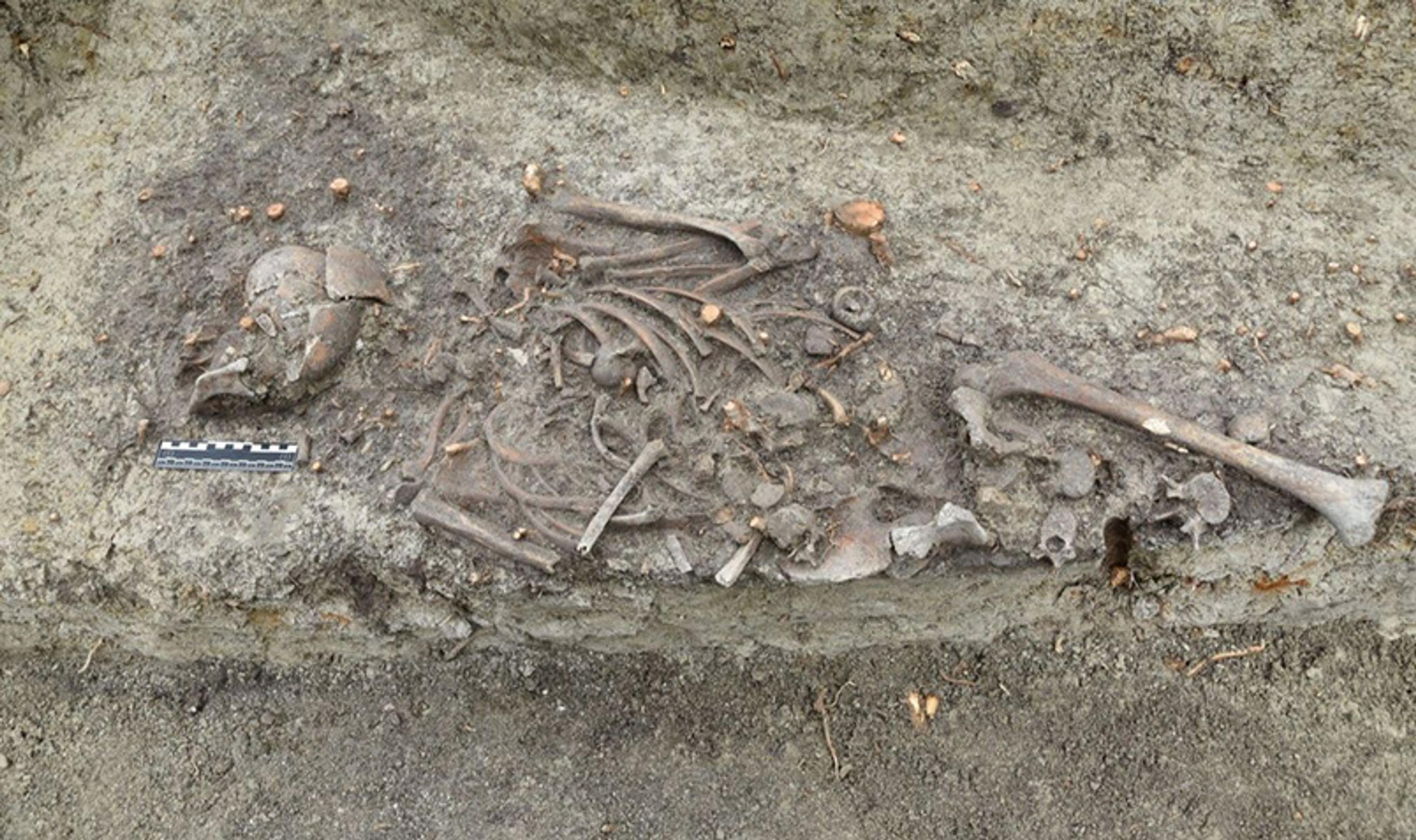
Skeleton unearthed at Góra Chełmska, Chełm, Poland. Courtesy the Lublin Region Conservator of Monuments
This burial may also be associated with disease. As the child’s remains show no signs of trauma, it’s possible they died from an illness, perhaps even tuberculosis. The disease was rampant throughout the region at the time and has been associated with many atypical burials from medieval Poland.
A tighter link with disease can be found at a site in the Polish town of Drawsko, where six ‘deviant’ burials have been excavated from a cemetery. A team of researchers who analysed the graves wrote that:
Of these six individuals, five were interred with a sickle placed across the throat or abdomen, intended to remove the head or open the gut should they attempt to rise from the grave. Two individuals also had large stones positioned beneath their chins, likely as a preventative measure to keep the individual from biting others or to block the throat so that the individual was unable to feed on the living.
Drawsko suffered a cholera outbreak in 1661 and there appears to be a link between that date and the unusual burials. Common belief at the time blamed the spread of disease on the risen dead. Containing suspicious bodies would have given the public something tangible to do to ‘help’ in the face of a mysterious illness.
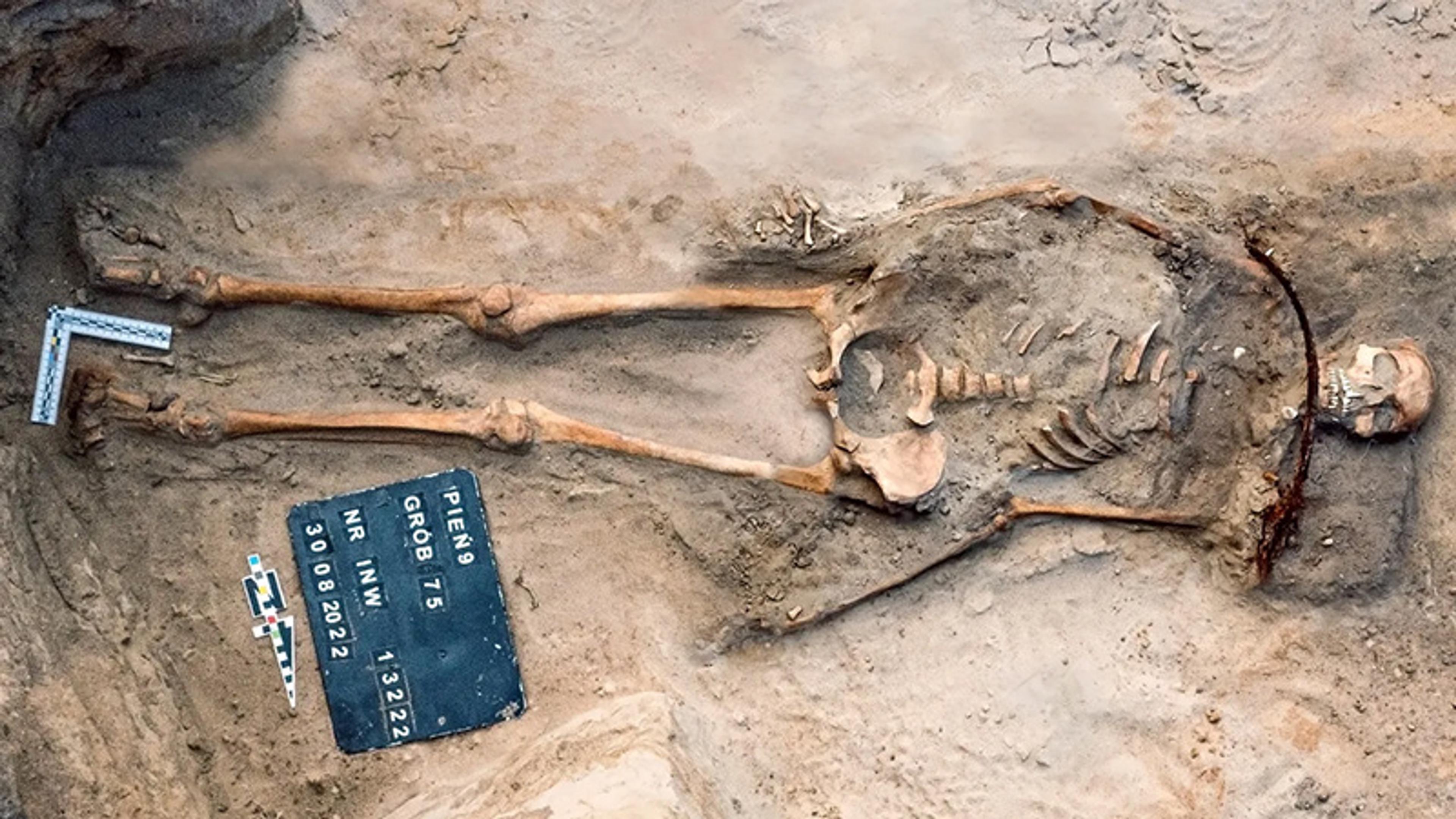
Skeleton uncovered at Drawsko, Poland. Courtesy Łukasz Czyżewski/Institute of Archeology at Nicolaus Copernicus University
Some archaeologists have hypothesised that those who were buried in this way were ostracised for social reasons. Others suspect such practices may be connected with those who were the first to die or the first who were linked to the spread of disease. But much of this is speculation: there are no biological factors that appear to separate the deviant burials in the Drawsko cemetery from other nearby burials. Cholera leaves no trace in the skeleton because it kills too quickly.
Incredibly, the connection between disease and a fear of the dead seems to have persisted far into the 19th century. Consider the ‘vampire panic’ in New England, where spreading tuberculosis led some to exhume the bodies of diseased individuals and burn their internal organs. At the height of the ‘Great New England Vampire Panic’, which lasted late into the 19th century, John Barber, a 55-year-old man from Griswold, Connecticut, was subjected to a ‘deviant’ burial. He was beheaded and his leg bones were crossed over him to hold him down. Though his body was discovered in 1990, it was only after subsequent analysis that researchers were able to argue he was likely riddled with tuberculosis when he died.
The belief that the dead could rise from the grave after death – an idea at the root of our entire modern mythology around the undead – appears to be incredibly ancient. What may help explain this belief, and the deviant burials that accompany it, is the evolution of diseases, such as tuberculosis.
This isn’t the only explanation: as the archaeologist Eileen M Murphy writes in Deviant Burial in the Archaeological Record (2008), atypical burials were given to ‘criminals, women who died during childbirth, unbaptised infants, people with disabilities, and supposed revenants, to name but a few.’ Disease, however, seems to be a persistent thread connecting strange burials across time.
As such diseases evolved, so did humanity’s fear that, sometimes, the dead may not really be dead. In fact, they may even be responsible for spreading illness. From early prehistory, it appears that our ancestors went to great lengths to prevent such contagion through ritual containment. The three teenage boys excavated at Dolní Věstonice may be one of our earliest examples of such fears.
So, what then should we think of Bacon’s beliefs regarding our fear of death? For him, and many of us today, death is nothing more than the undeniable conclusion of a natural process. And fearing this natural end, he wrote, is ‘weak’. However, for much of human history, being anxious about the dead and buried may have been a natural response to profound uncertainties. Fearing the dead may have been regarded as an essential part of what it meant to protect human life.
‘What would it be like,’ Paul Barber writes in Vampires, Burial, and Death (1988), ‘to live in a civilisation in which all diseases were mysterious?’ The answer, he writes, is that ‘one would learn – as was done in Europe in past centuries – to shun the dead, as potential bearers of death.’ But humans didn’t only shun. We also learned to bind with ropes, to dismember, to pin down, to stuff with stones, to pierce with stakes, to fasten with sickles and nails.

